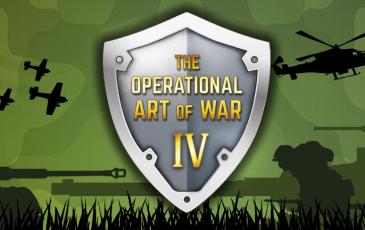Pampa War 2011 South American Conflict - Century of Warfare, TOAW III, and TOAW IV

| Rating: | 7.6 (1) |
| Games Played: | 1 |
| SM: | 5 |
| Turns: | 46 |
| Type: | Custom |
| First Side: | Argentina |
| Second Side: | Brazil |
| Downloads: | 260 |
"Pampa War 2011" South American Conflict Version 1.1 Designer: Mauro Medina Email: [email protected] TOAW-3 ver. 3.4 :: PBEM :: :: Brazil PO, Argentina PO :: Date: September 2011 Location: Brazil, Uruguay, Argentina and Paraguay – South America Map scale: 10 km per hex Time scale: full day turns Unit scale: Battalion/Regiment Length: 46 turns UNIT COLORS
Brazil – Various on Green (depending on the Army Corps and Navy/Air Force)
Uruguay – Various on Brown
Argentina – Various on light Blue
Venezuela – Various on Red
Paraguay – Various on dark Blue
Background
After the Cold War, the Berlin wall fall and end of the USSR, freedom winds blow in the world. South American Nations people also pursuit democracy, but the new generation of local Politian taking advantage of the low education level of the population and through normal and regular elections, by means of "wonderful promises" began to assume the governments, based upon populism, demagogy, violence and corruption.
Financed by the high international oil prices, Venezuela began a military program of rearmament and the Bolivarian Armed Forces were being equipped with Russian and Chinese weapons, like AK assault rifles, Sukhoi fighters, T 72 tanks, Kilo submarines etc… New military units were created and trained. Venezuela’s army was renamed as Bolivarian Army. For the population, however, there is lack of consumer goods, electrical energy rationing, high inflation and a decreasing standard of life and liberty.
Argentina
was facing an economic challenge for international financing and the main support was given by Venezuela. The commercial competition with Brazil is getting harder every day and the paper and pulp new plants in Uruguay put the population angry with the government due the internal high unemployment rates. The historic supremacy in South America was definitely lost to Brazil and there was no hope was to come back to the previous status.The new Paraguayan government was elected upon a promise of assuming the control of the Itaipu Hydroelectric Power Plant (14,400 MW), in the Brazilian border.
Brazil
faces internal political attrition between the Congress, the Supreme Court and the President, so the external movements of its neighbors are quite not well evaluated by diplomacy. Brazilian foreign politics is being conducted based upon ideology and not in pragmatism. There is also a misunderstanding situation between the government and the armed forces were the military were under suspect and not taken into consideration by Politian, but the Defense Ministry is not static and some actions were taken as some reequipping.Uruguay
has a relative stable economy and politics but lacks support in an eventual shock against Argentinean interests in the paper and pulp plants negotiations. The natural ally is Brazil.
The World Economic crisis of 2008 reinforced the chronic unemployment and the governments were facing people unhappiness all over the region. The new situation precipitated the Nations to assume firmly their positions, and to look externally to get the population unified around their leaders. For Argentina, Venezuela and Paraguay maybe now it is the chance of solving their internal problems and, at the same time, taking advantage of the Brazilian military weakness to beat them and occupy the rich southern region and Uruguay. Venezuela will support militarily and economically, as defeating Brazil in the south will open the doors for occupying the Brazilian Roraima state in the Amazonian region in their own border.
Recent events
In October 2010, Argentina, Venezuela, Bolivia and Paraguay signed a secret military pact. Brazil and Uruguay should be militarily defeated. The goals are:
Argentina: occupy Brazilian southern state (Rio Grande do Sul) and Uruguay.
Paraguay: occupy the Itaipu Hydro Power Plant and vicinity in Brazil.
Venezuela: support Argentina and Bolivia militarily and occupy Brazilian northern territories in Amazonia (Roraima War scenario).
Bolivia: occupy the southern Brazilian territories in Amazonia (Acre War scenario).
The preparative and military plans initiated in January 2011. Pretending to jointly prepare their armies for an expected future war against the USA, Venezuela sent to Argentina, in July, an Army Corps constituted by the 1st Infantry and the 4th Armored Divisions plus Airborne troops, SU 30 fighters squadron and submarines. In August, jointly maneuvers took place in Argentina with large troop deployment, weapons supplying from Venezuela’s depots and, by mid August, total mobilization was announced as a "Planned War Exercise" against the imperialists.
With the American intelligence awareness, Brazil and Uruguay soon realized what was going on and slowly also began their mobilization and an agreement of mutual assistance was established between them.
St rategy for Argentina, Venezuela and Paraguay
Being much smaller in resources, population and economics in the long term, the main objectives for the Argentinean/Venezuelan forces are to quickly conquest Montevideo (Uruguay) and Porto Alegre (Brazil). Due to have all reserves already mobilized and part of them were fixed in the Chilean border to avoid any intervention, as Chile is a natural allied of Brazil and Uruguay, there will be a few reinforcements during the period. The main advantage of the Argentinean/Venezuelan side is to count on an initial stronger armored shock force already available, mainly TAM and TAM2 tank regiments and T 72 tank battalions.
Strategy for Brazil and Uruguay
For the Brazilian forces the main objective is to slow down the initial attacks till the reinforcements begin to arrive from the internal mobilization, besides that, depending on the occupation areas achieved by Argentina’s forces in Brazil, some local forces will be organized and put available to the Brazilian Command due to local historic tradition of recruiting provisional volunteer corps, in the ancient times. The secondary Brazilian and Uruguayan objectives are to conquest Corrientes and Buenos Aires, if possible. The Brazilian main advantage is to have larger resources, population and economics in the long term but the mobilization will take time to make a difference. The Brazilian army has a small but well trained armored and mechanized cavalry force mainly Leopard I A5 and Osorio tanks and Sucuri and Cascavel fighting vehicles regiments. The Uruguayan army will also have few reinforcements and will depend on the Brazilian support to hold the lines, due to their small population and resources availability.
As starting at the end of the winter period in the Southern hemisphere, the weather can bring some cold fronts and even a warm front time by time, maybe storms.
UN will intervene and there is a possibility of being established a Cease Fire, so both sides have to use their own specific advantages for getting a Cease Fire situation better for the Peace Treaty Negotiations that will follow the Pampa War.
House Rules
As Paraguay was also a poor country and was not fully involved in the planning with Argentina and Venezuela for security reasons, they were in doubt of entering or not the war, so Paraguay will only attack if the Argentinean forces conquest Alegrete (49,58), inside Brazil, and due to that, Brazil will only attack Paraguay if it’s attacked first.
| Player Voting Stats | ||
|---|---|---|
| Member | Balance | Enjoyment |
| Slightly Pro Argentina | 7 | |
| Gaming Records | |||||||||
|---|---|---|---|---|---|---|---|---|---|
| 1st Side Player | 2nd Side Player | Result | Score | ||||||
 |
burroughs | vs. | Choowee |  |
Brazil Overwhelming Victory | 55 | 10 | ||






















